11.5.13 All Fall Down
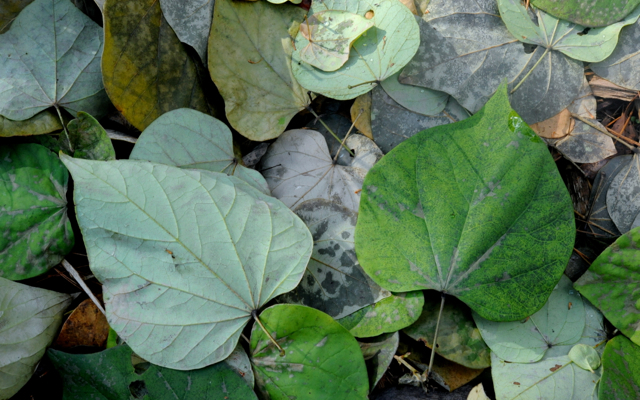
photos by gluttonforlife
The redbud tree, a beautiful native species, is the first to offer its blush of pink blossoms in the early spring and it holds onto its large, heart-shaped leaves right up until the killing frost. On that very day, they fall slowly to the ground like great green tears. It is a sign that winter is upon us, like the wolf at the door.
There were not a great many garden posts this summer, so you'll have to take my word for it that it was a banner year. I harvested enough mint, chamomile, lemon verbena and anise hyssop to make many tins of my own "Garden Variety" tea. And we are fully stocked with frozen tomato sauce and zucchini. Remnants of its glory remain: the crisp dried globes of hydrangea, blackened peony leaves, a few wild grasses still standing tall. They bring to mind the concept of wabi-sabi, an aesthetic that derives from Buddhist teachings, centered on the acceptance of imperfection and impermanence. I learned about it years ago, from this book a friend gave me, and it resonated deeply right away. I have always loved the patina of age—on leather, on wood, on bronze, on human faces.
There were not a great many garden posts this summer, so you'll have to take my word for it that it was a banner year. I harvested enough mint, chamomile, lemon verbena and anise hyssop to make many tins of my own "Garden Variety" tea. And we are fully stocked with frozen tomato sauce and zucchini. Remnants of its glory remain: the crisp dried globes of hydrangea, blackened peony leaves, a few wild grasses still standing tall. They bring to mind the concept of wabi-sabi, an aesthetic that derives from Buddhist teachings, centered on the acceptance of imperfection and impermanence. I learned about it years ago, from this book a friend gave me, and it resonated deeply right away. I have always loved the patina of age—on leather, on wood, on bronze, on human faces.
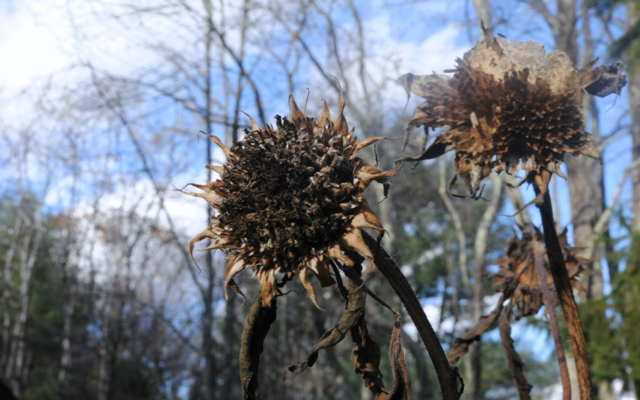
dead head
The defining characteristics of wabi-sabi include asymmetry, irregularity, simplicity, economy, austerity, modesty, intimacy and an appreciation of the ingenuous integrity of natural objects and processes. Although the exact original meanings of these two Japanese words are elusive, they have evolved over time. Wabi now connotes rustic simplicity, freshness or quietness, as applied to natural or manmade objects. It can also refer to quirks and anomalies arising from the process of construction, which add uniqueness and elegance to the object. Sabi is beauty or serenity that comes with age, when the life of the object and its impermanence are reflected in its patina and wear, or in any visible repairs.

gone to seed
Thus a cracked vase is not "ruined." And a dried seed pod is beautiful. Both contain within them signs of life, of experience and of the continual ebb and flow.
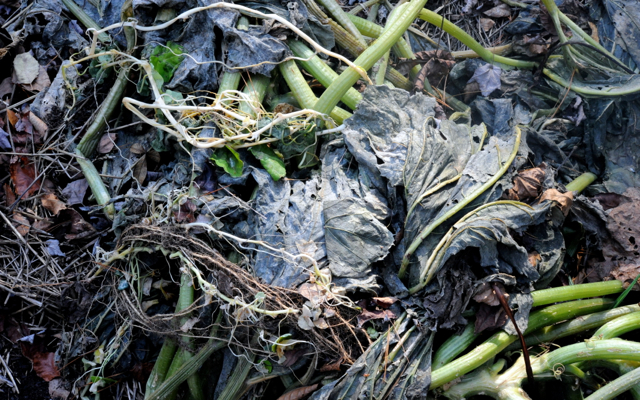
breaking down
Being surrounded by natural, changing, unique objects helps us connect to reality in a way that a search for perfection never can. Decay and death are simply a part of life. Nowhere is this better illustrated than in the garden, where next year's growth arises out of the compost heap.

bottom feeder
The plants that are breaking down are food for the insects and critters that still survive. (This wasp was almost three inches long!)
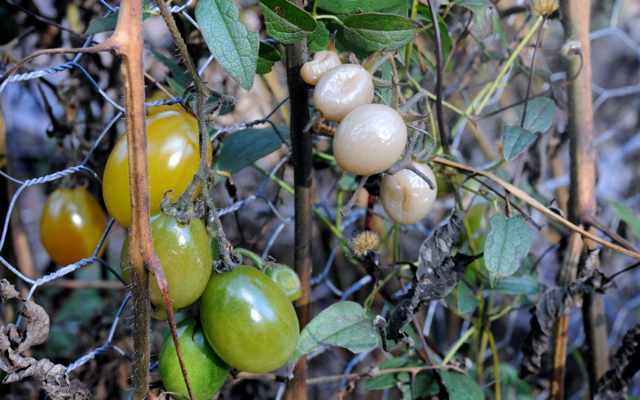
frosted fruit
Our tomato vines bore a ridiculous amount of fruit this year. I love those albino cherry tomatoes, sapped of all color by the frost.
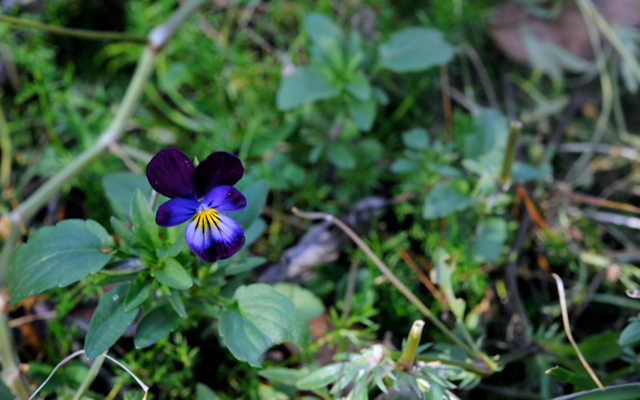
pure optimism
Signs of life still pop up in unexpected places.

winter greens
Chard, parsley and kale are still going strong, allegedly even sweeter after the first frost.
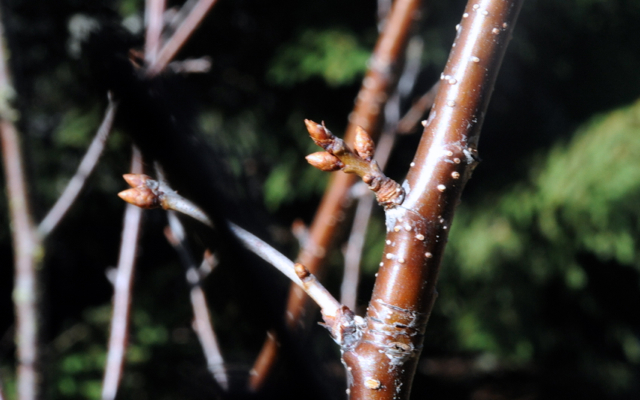
a promise of things to come
Upon close examination, it's quite thrilling to spot the buds set up for next year. Tucked away in there are the fragrant lilacs and cherry blossoms that will start a whole new cycle. In the meantime, grey is the color of hope.






4 Comments